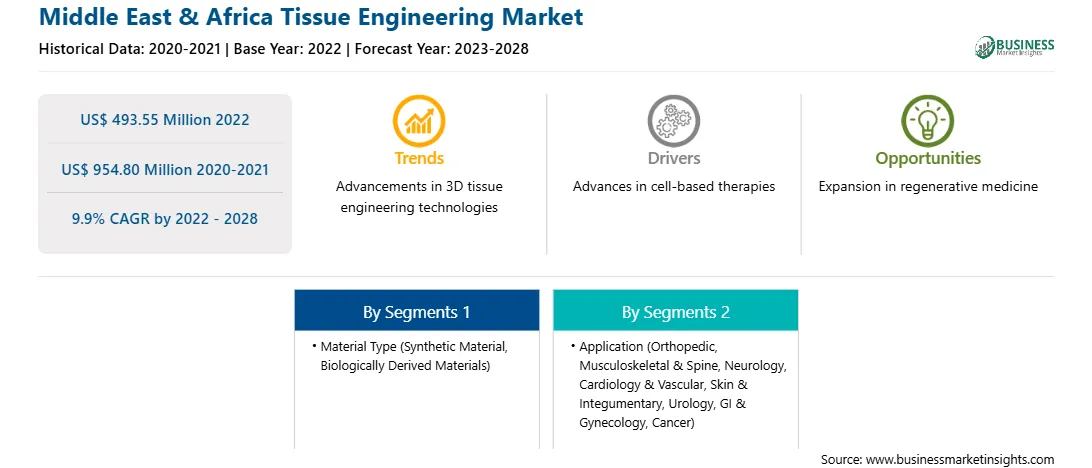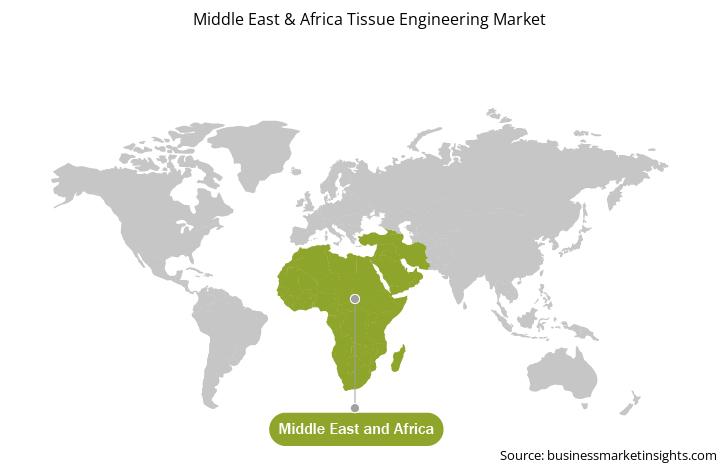The rising chronic illness cases, increasing geriatric population, and surging pediatric care need are a few of the primary factors boosting the growth of the healthcare sector. The sector has been experiencing rapid transformation since the last couple of years. Various countries across the region use advanced technologies in healthcare. With an increase in the need for better healthcare facilities, technology-enabled care (TEC) solutions are in demand in the healthcare systems, especially in the emerging economies. As a result, various healthcare players are investing significant amounts of their revenues in R&D activities to develop advanced solutions, including stem cell products, and associated therapeutic technologies. Also, reimbursements provided for various medical procedures are likely to fuel the growth of this sector during the forecast period. The abovementioned factors are expected to generate growth opportunities for the tissue engineering market players during 2021–2028.
With new features and technologies, vendors can attract new customers and expand their footprints in emerging markets. This factor is likely to drive the Middle East & Africa tissue engineering market at a substantial CAGR during the forecast period.

Strategic insights for the Middle East & Africa Tissue Engineering provides data-driven analysis of the industry landscape, including current trends, key players, and regional nuances. These insights offer actionable recommendations, enabling readers to differentiate themselves from competitors by identifying untapped segments or developing unique value propositions. Leveraging data analytics, these insights help industry players anticipate the market shifts, whether investors, manufacturers, or other stakeholders. A future-oriented perspective is essential, helping stakeholders anticipate market shifts and position themselves for long-term success in this dynamic region. Ultimately, effective strategic insights empower readers to make informed decisions that drive profitability and achieve their business objectives within the market.

| Report Attribute | Details |
|---|---|
| Market size in 2022 | US$ 493.55 Million |
| Market Size by 2028 | US$ 954.80 Million |
| Global CAGR (2022 - 2028) | 9.9% |
| Historical Data | 2020-2021 |
| Forecast period | 2023-2028 |
| Segments Covered |
By Material Type
|
| Regions and Countries Covered | Middle East and Africa
|
| Market leaders and key company profiles |
The geographic scope of the Middle East & Africa Tissue Engineering refers to the specific areas in which a business operates and competes. Understanding local distinctions, such as diverse consumer preferences (e.g., demand for specific plug types or battery backup durations), varying economic conditions, and regulatory environments, is crucial for tailoring strategies to specific markets. Businesses can expand their reach by identifying underserved areas or adapting their offerings to meet local demands. A clear market focus allows for more effective resource allocation, targeted marketing campaigns, and better positioning against local competitors, ultimately driving growth in those targeted areas.

The Middle East & Africa tissue engineering market is segmented on the basis of material type, application, and country. Based on material type, the market is segmented into biologically derived materials, synthetic materials, and others. In 2022, the biologically derived materials segment held the largest market share. However, the synthetic materials segment is expected to register the highest CAGR during the forecast period. Based on application, the market is segmented into orthopedic, musculoskeletal & spine, skin & integumentary, cardiology and vascular, neurology, cancer, gi & gynecology, urology, and others. In 2022, the orthopedic, musculoskeletal, & spine segment held the largest market share. However, the skin & integumentary segment is expected to register the highest CAGR in the market during the forecast period. Based on country, the Middle East & Africa tissue engineering market is segmented into the UAE, Saudi Arabia, South Africa, and Rest of MEA. In 2022, the UAE held the largest market share; and it is also expected to grow at the fastest CAGR during the forecast period.
Zimmer Biomet; B. Braun Melsungen AG; Stryker Corporation; AbbVie, Inc.; Integra LifeSciences Holdings Corporation; Medtronic; Baxter International Inc.; Johnson and Johnson Services, Inc.; 3M; and Cook Biotech Inc. are among the leading companies in the Middle East & Africa tissue engineering market.
The Middle East & Africa Tissue Engineering Market is valued at US$ 493.55 Million in 2022, it is projected to reach US$ 954.80 Million by 2028.
As per our report Middle East & Africa Tissue Engineering Market, the market size is valued at US$ 493.55 Million in 2022, projecting it to reach US$ 954.80 Million by 2028. This translates to a CAGR of approximately 9.9% during the forecast period.
The Middle East & Africa Tissue Engineering Market report typically cover these key segments-
The historic period, base year, and forecast period can vary slightly depending on the specific market research report. However, for the Middle East & Africa Tissue Engineering Market report:
The Middle East & Africa Tissue Engineering Market is populated by several key players, each contributing to its growth and innovation. Some of the major players include:
The Middle East & Africa Tissue Engineering Market report is valuable for diverse stakeholders, including:
Essentially, anyone involved in or considering involvement in the Middle East & Africa Tissue Engineering Market value chain can benefit from the information contained in a comprehensive market report.